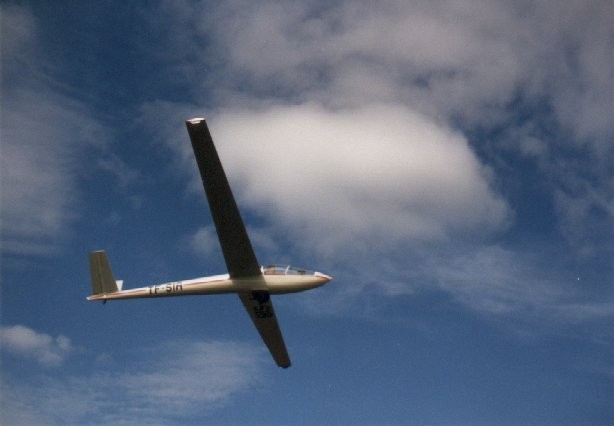Schreder / HP-16
Glider Reg. Number: N45HP
1971
Design & Development
The Schreder HP-16 is an American mid-wing, single seat, V tailed, FAI Standard Class glider that was designed by Richard Schreder
After the failure of the HP-15 to perform well in the 1969 US Nationals Schreder started the HP-16 with a new design philosophy. Avoiding the extremely high aspect ratio that the 15 had, he opted for a more modest 21.5:1 aspect ratio and larger wing area to improve performance in weak conditions. The HP-16's wing has 50% more wing area than the HP-15 and uses a Wortmann 67-150 airfoil.

Like other Schreder designs the HP-16 is of all-metal construction, but with the wing skins bonded to foam ribs rather than using rivets to provide a smoother surface. The bonded construction also cut building time. The wing features the signature Schreder 90° flaps that allow steep descents and the use of small fields for landing.
The HP-16s were all amateur-built aircraft and about 20 were completed and flown.
In April 2011 there were still eleven HP-16s registered with the US Federal Aviation Administration and two registered with Transport Canada.
Specifications
General characteristics
- Crew: one
- Wingspan: 49 ft 3 in (15 m)
- Wing area: 113 sq ft (10.5 m2)
- Aspect ratio: 21.5
- Airfoil: Wortmann 67-150
- Empty weight: 500 lb (227 kg) including 200 lbs (90 kg) of water ballast.
- Gross weight: 924.5 lb (419 kg)
Performance
- Maximum glide ratio: 36:1 at 55 mph (89 km/h)
- Rate of sink: 130 ft/min (0.66 m/s) at 50 mph (80 km/h)
- Wing loading: 8.18 lb/sq ft (39.9 kg/m2) with water ballast